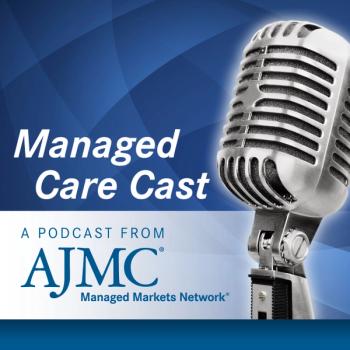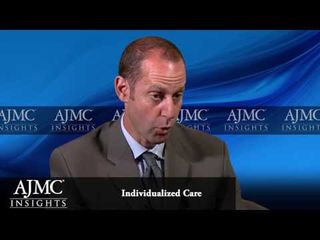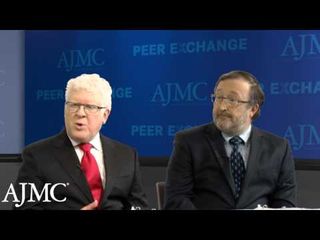
Insurance
Latest News
Latest Videos

CME Content
More News

The $1.9 trillion spending package aimed at providing COVID-19 relief for those with low and middle incomes also represents the biggest investment in the exchange marketplaces created by the Affordable Care Act (ACA) since the landmark law was passed 11 years ago.

The coronavirus disease 2019 (COVID-19) pandemic has led to sharp declines in US life expectancy; a new CMS administrator nominee is selected; Biden administration announces funds to combat virus variants.

In a panel at the 2021 AcademyHealth National Health Policy Conference, representatives from 3 community health plans across the United States discussed how payers are driving telehealth access and utilization in the wake of the coronavirus disease 2019 pandemic.

Treatment of asthma with biologics was lower for those on public health insurance compared with those who had private insurance, with Blacks underrepresented relative to Whites in publicly insured visits where biologic treatment is used.

The Department of Justice (DOJ), under a new administration, on Wednesday dropped its previous position that the now-defunct tax provision in the Affordable Care Act (ACA) cannot be severed from the rest of the law, thus making the entire health law unconstitutional.

Experts outlined the impact value-based insurance design (VBID) has had on the coronavirus disease 2019 (COVID-19) pandemic response and future potential applications of the model.

Patients’ socioeconomic status is a significant factor in predicting survival rates for multiple myeloma, according to a new study.

With the ongoing coronavirus disease 2019 pandemic, a rising number of uninsured Americans, and a new Democratic president and Senate majority, 2021 is shaping up to be a dynamic year for health care policy.

A 9% year-over-year increase was observed in the number of US Medicare beneficiaries who enrolled in a Medicare Advantage health plan in 2020, with the increase in enrollment influenced by the coronavirus disease 2019 pandemic and its related effects.

The Biden administration will reopen the health exchanges created by the Affordable Care Act (ACA); direct HHS and other agencies to reexamine other health policies, including Medicaid work requirements; and reverse the so-called global gag rule while affirming support for reproductive health.

Robert Baird, RN, MSA, president of the National Cancer Treatment Alliance, discusses ways that employers of all sizes can pursue direct contracting with health care providers.

Robert Baird, RN, MSA, president of the National Cancer Treatment Alliance, discusses potential issues employers can avoid by direct contracting with providers.

Insurance status can influence an individual’s ability to access care, stated Milena Murray, PharmD, MSc, BCIDP, AAHIVP, associate professor at Midwestern University College of Pharmacy.

Among 11 developed countries, the United States has the highest maternal mortality rate, a relative undersupply of maternity care providers, and no guaranteed access to provider home visits or paid parental leave in the postpartum period, a recent report from The Commonwealth Fund concluded.

Expansion of insurance coverage due to the Affordable Care Act led to a reduction in the use of emergency services for patients with asthma in New York City.

Challenges remain, in light of new guidelines, when making treatment decisions for patients with severe asthma, noted Megan Althoff, MD, PhD, second year fellow, University of Colorado, Division of Pulmonary Sciences and Critical Care Medicine.

The passing of Supreme Court Justice Ruth Bader Ginsburg has thrown an already contentious election season into greater limbo, as her death and potential replacement could result in substantial changes to the future of the Affordable Care Act and women’s reproductive rights.

Given the constraints prevalent post-COVID-19, Dr Mark Fendrick, director of the University of Michigan Center for Value-Based Insurance Design, stresses that it is now more important than ever for the health care industry to prioritize payment reform, value-based benefit design, and novel policy initiatives.

Krisda H. Chaiyachati, MD, MPH, MSHP, discusses the study he co-wrote entitled “Economic Outcomes of Insurer-Led Care Management for High-Cost Medicaid Patients.”

The orders President Trump signed Friday include a deadline for the pharmaceutical industry to come up with their own plan by August 24 to lower prices.

The US government partners with biotech giants Pfizer and BioNTech to distribute a coronavirus disease 2019 (COVID-19) vaccine; the COVID-19 death record continues to be broken; could Medicare be in financial trouble?

End-stage renal disease has long been one of the most expensive and debilitating conditions that affects Medicare beneficiaries. Not only does dialysis cost $90,000 a year—those awaiting a kidney transplant automatically qualify for Medicare—but the need to travel to a dialysis center multiple times a week disrupts employment and home life.

Significant populations of seriously ill individuals are insured by all lines of business and have meaningfully different needs and medical histories in California.

Among Medicare enrollees, there was substantial between-practice variation in the use of second-generation diabetes drugs between 2007 and 2015, according to a study published in JAMA Network Open. Data also revealed a concentration of use among a few prescribers and practices, who were responsible for widespread early diffusion.

The objective of this research was to identify strategies that significantly lower unnecessary inpatient utilization among Medicare beneficiaries with chronic disease.























































